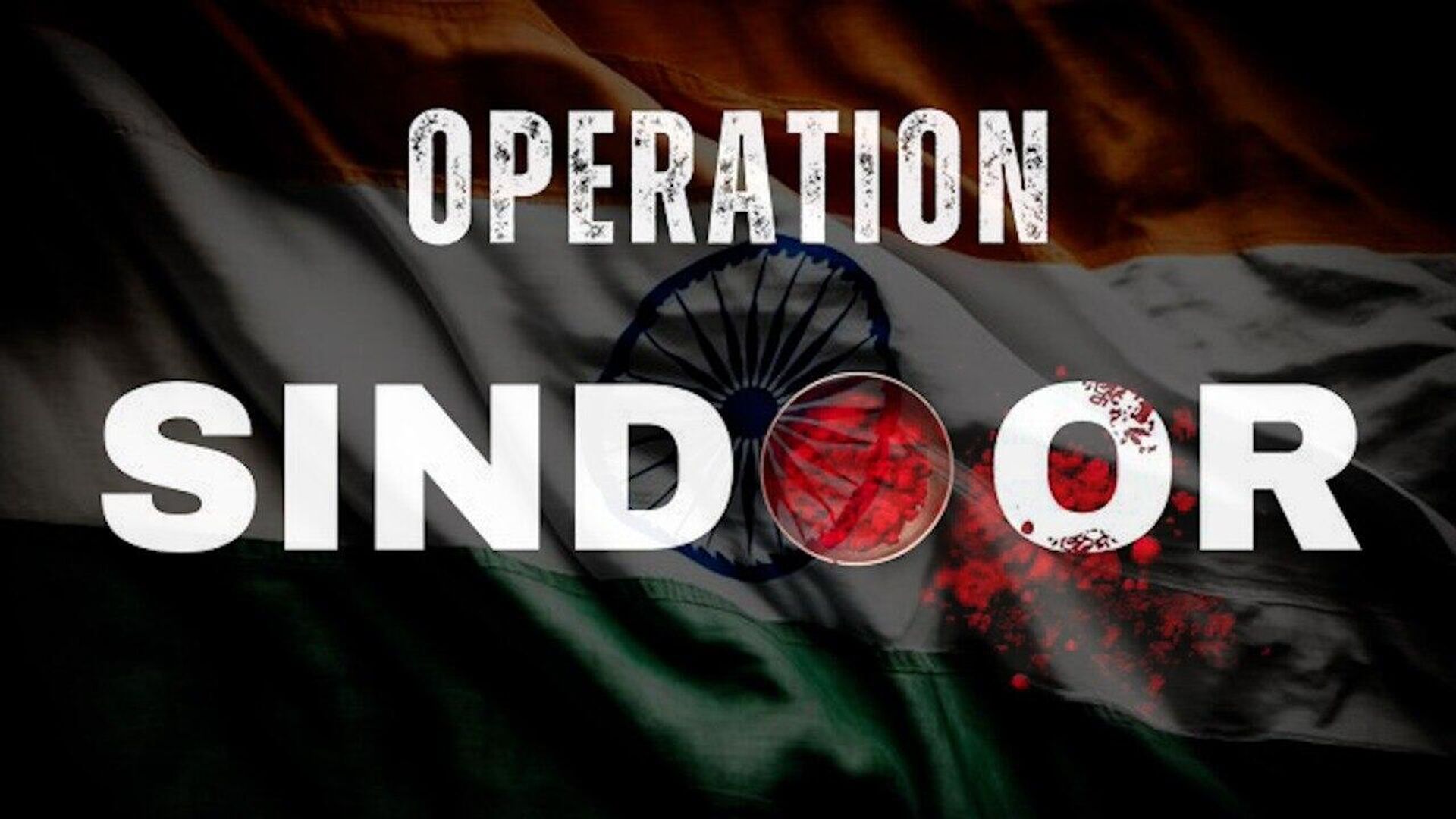https://sputniknews.in/20250521/operation-sindoor-bolsters-prestige-of-indias-defence-exports-9169958.html
Operation Sindoor Bolsters Prestige of India's Defence Exports
Operation Sindoor Bolsters Prestige of India's Defence Exports
Sputnik India
India's domestically produced weapons demonstrated their might during the military clash with Pakistan earlier this month, sparking a huge buzz around the... 21.05.2025, Sputnik India
2025-05-21T18:47+0530
2025-05-21T18:47+0530
2025-05-21T18:47+0530
sputnik opinion
india
pakistan
southeast asia
ministry of defence (mod)
islamabad
new delhi
delhi
akash missile
missiles
https://cdn1.img.sputniknews.in/img/07e9/05/0f/9141787_0:0:1280:720_1920x0_80_0_0_706209139998b6c88d062d8e19a874d1.jpg
Operation Sindoor, India's counter-terrorism initiative against terrorist groups operating from Pakistani soil, ultimately escalated into a full-scale military confrontation between the two nuclear-armed nations. During the recent hostilities between New Delhi and Islamabad, the Indian Armed Forces deployed a wide array of indigenous weapons that made heads turn thanks to their exceptional efficacy.Among the indigenous platforms that earned rich plaudits from military pundits as well as from ordinary Indians was the Akashteer air defence system.According to India's Ministry of Defence (MoD), the Akashteer system highlights intelligent warfare rather than brute force. It offers a unified, real-time air picture accessible to all participating units—including the control room, radars, and defense guns—facilitating coordinated and effective air defense operations.The Akashteer system is integrated within the larger C4ISR (Command, Control, Communications, Computers, Intelligence, Surveillance, and Reconnaissance) framework, operating in coordination with other systems. As a vehicle-mounted system, it offers enhanced mobility and ease of deployment in hostile environments, according to the Ministry of Defence.Interestingly, Akashteer acted like an impenetrable wall, particularly during Pakistan's all-out attack on the intervening night of May 9-10, stopping a barrage of missiles and drones. India's military previously confirmed that Pakistan fired as many as 800 drones and missiles in response to the Indian Air Force's (IAF) precision strikes on nearly a dozen Pakistani air bases.Meanwhile, the state-run Bharat Electronics Ltd (BEL), the company behind the Akashteer system, beamed with pride in a post on X, praising its "in-house designed & manufactured Air Defence System, Akashteer, proved its mettle in the war-field"."Ground-based Defence Systems integrated with Akashteer made it hell for Pakistan's air adventures," the firm further said.Akashteer's stellar performance in Operation Sindoor, achieving a 100% success rate against Pakistan's attacks, has definitely boosted its export potential, stressed Bengaluru-based defence pundit Girish Linganna.Nations in Southeast Asia, West Asia, and Africa—who are already interested in Indian platforms such as the Akash missile—will likely find Akashteer to be highly reliable. This perception is expected to boost demand for Akashteer in these markets, he opined.Akashteer is an Indian Army programme that has integrated its air defence guns, battlefield radars, and missiles. Essentially, it aims to bridge operational gaps through advanced data linking, revealed Air Marshal (Retd.) M. Matheswaran.Also, the indigenous Akash short-range surface-to-air missile (SRSAM) system received accolades after it showed immaculate results after being fielded to engage Pakistani aerial threats during Operation Sindoor.For the unversed, the Akash weapon system can simultaneously engage multiple targets in Group Mode or Autonomous Mode and has built-in Electronic Counter-Counter Measures (ECCM) features, as per the MoD.The Akash missile has proven its combat prowess in Operation Sindoor by neutralising Pakistan's drones and missiles with a high success rate. Its stellar performance has significantly boosted its global appeal, and according to Linganna, the strong interest from Armenia, Egypt, the Philippines, and Vietnam is likely to lead to firm orders.The Akash missile has gone through significant improvements and revisions over the last 15 years. Operation Sindoor has served as a crucial proving ground for this weapon system, and, thus, the scope for the Akash SRSAM has expanded enormously, especially given its affordability, Matheswaran noted.
https://sputniknews.in/20250519/india-sees-surge-in-pro-russian-sentiment-after-operation-sindoor-9159337.html
india
pakistan
southeast asia
islamabad
new delhi
delhi
middle east
armenia
vietnam
the philippines
Sputnik India
feedback.hindi@sputniknews.com
+74956456601
MIA „Rossiya Segodnya“
2025
Pawan Atri
https://cdn1.img.sputniknews.in/img/07e6/0c/13/139630_147:0:831:684_100x100_80_0_0_8fa2b25903e7787fe6a2698552c167df.png
Pawan Atri
https://cdn1.img.sputniknews.in/img/07e6/0c/13/139630_147:0:831:684_100x100_80_0_0_8fa2b25903e7787fe6a2698552c167df.png
News
en_IN
Sputnik India
feedback.hindi@sputniknews.com
+74956456601
MIA „Rossiya Segodnya“
Sputnik India
feedback.hindi@sputniknews.com
+74956456601
MIA „Rossiya Segodnya“
Pawan Atri
https://cdn1.img.sputniknews.in/img/07e6/0c/13/139630_147:0:831:684_100x100_80_0_0_8fa2b25903e7787fe6a2698552c167df.png
india, pakistan, southeast asia, ministry of defence (mod), islamabad, new delhi, delhi, akash missile, missiles, operation sindoor, middle east, armenia, vietnam, the philippines, defense export, military equipment, military cooperation, arms trade
india, pakistan, southeast asia, ministry of defence (mod), islamabad, new delhi, delhi, akash missile, missiles, operation sindoor, middle east, armenia, vietnam, the philippines, defense export, military equipment, military cooperation, arms trade
Operation Sindoor Bolsters Prestige of India's Defence Exports
India's domestically produced weapons demonstrated their might during the military clash with Pakistan earlier this month, sparking a huge buzz around the world. Sputnik India assesses how their battlefield performance during Operation Sindoor could influence the global defence market.
Operation Sindoor, India's counter-terrorism initiative against terrorist groups operating from Pakistani soil, ultimately escalated into a full-scale military confrontation between the two nuclear-armed nations. During the recent hostilities between New Delhi and Islamabad, the Indian Armed Forces deployed a wide array of indigenous weapons that made heads turn thanks to their exceptional efficacy.
Among the indigenous platforms that
earned rich plaudits from military pundits as well as from ordinary Indians was the Akashteer air defence system.
According to India's Ministry of Defence (MoD), the Akashteer system highlights intelligent warfare rather than brute force. It offers a unified, real-time air picture accessible to all participating units—including the control room, radars, and defense guns—facilitating coordinated and effective air defense operations.
"It is a system designed to automate detection, tracking and engagement of enemy aircraft, drones and missiles. It integrates various radar systems, sensors and communication technologies into a single operational framework. Akashteer gathers data from multiple sources, processes it and allows for automated, real-time engagement decisions," a MoD description of the system reveals.
The Akashteer system is integrated within the larger C4ISR (Command, Control, Communications, Computers, Intelligence, Surveillance, and Reconnaissance) framework, operating in coordination with other systems. As a vehicle-mounted system, it offers enhanced mobility and ease of deployment in hostile environments, according to the Ministry of Defence.
Interestingly, Akashteer acted like an impenetrable wall, particularly during Pakistan's all-out attack on the intervening night of May 9-10, stopping a barrage of missiles and drones. India's military previously confirmed that Pakistan fired as many as 800 drones and missiles in response to the Indian Air Force's (IAF)
precision strikes on nearly a dozen Pakistani air bases.
"Akashteer, is no longer a concept confined to defence journals. It is the sharp edge of India's air defence, the unseen wall that stopped a barrage of missiles and drones on the night of May 9th and 10th, when Pakistan launched its deadliest attack on Indian military and civilian areas. Akashteer is India’s fully indigenous, automated Air Defence Control and Reporting System, that intercepted and neutralised every inbound projectile," the MoD emphasised.
Meanwhile, the state-run Bharat Electronics Ltd (BEL), the company behind the Akashteer system, beamed with pride in a post on X, praising its "in-house designed & manufactured Air Defence System, Akashteer, proved its mettle in the war-field".
"Ground-based Defence Systems integrated with Akashteer made it hell for Pakistan's air adventures," the firm further said.
Akashteer's stellar performance in Operation Sindoor, achieving a 100% success rate against Pakistan's attacks, has definitely
boosted its export potential, stressed Bengaluru-based defence pundit
Girish Linganna.
Nations in Southeast Asia, West Asia, and Africa—who are already interested in Indian platforms such as the Akash missile—will likely find Akashteer to be highly reliable. This perception is expected to boost demand for Akashteer in these markets, he opined.
"Fence-sitters, earlier unsure about India's defence products, may now trust their battle-proven capability and affordability, pushing them to choose Indian systems, strengthening India's global defence export market," Linganna told Sputnik India.
Akashteer is an Indian Army programme that has integrated its air defence guns, battlefield radars, and missiles. Essentially, it aims to bridge operational gaps through advanced data linking, revealed Air Marshal (Retd.) M. Matheswaran.
"Akashteer performed exceptionally well during Operation Sindoor, particularly the anti-aircraft guns, which have been used very effectively against the swarms of drones that were sent by Pakistan to inflict damage to Indian military and civilian assets. So it is an incredible success story and certainly there is a scope for an export market, especially after potential international buyers have seen what it has done to Pakistani weapons," the Indian Air Force veteran said in an interview with Sputnik India.
Also, the indigenous Akash short-range surface-to-air missile (SRSAM) system received accolades after it showed immaculate results after being fielded to engage Pakistani aerial threats during Operation Sindoor.
For the unversed, the Akash weapon system can
simultaneously engage multiple targets in Group Mode or Autonomous Mode and has built-in Electronic Counter-Counter Measures (ECCM) features, as per the MoD.
The Akash missile has proven its combat prowess in Operation Sindoor by neutralising Pakistan's drones and missiles with a high success rate. Its stellar performance has significantly boosted its global appeal, and according to Linganna, the strong interest from Armenia, Egypt, the Philippines, and Vietnam is likely to lead to firm orders.
"Regions like Southeast Asia, West Asia, and Africa, seeking cost-effective, battle-tested systems, may show renewed interest. Defence blocs like ASEAN and African Union nations could prioritise Akash for its affordability and reliability, enhancing India's defence export prospects," he underscored.
The Akash missile has gone through significant improvements and revisions over the last 15 years. Operation Sindoor has served as a crucial
proving ground for this weapon system, and, thus, the scope for the Akash SRSAM has expanded enormously, especially given its affordability, Matheswaran noted.
"Particularly, for smaller countries that are looking for optimal solutions to their air defence needs, Akash is a great attraction," he concluded.



